The plant has several names: a wine berry, a fig tree, a fig tree (Ficus of the Karika) and it belongs to the family of the mulberry. I already got to me with a fruit-free church with a height of 1.5 m, formed in two stems. Large beautiful leaves formed a crown, which was decorated with 15 fruits at different stages of ripening. So I became the owner of a monodomal grade of figs that form a nozzle 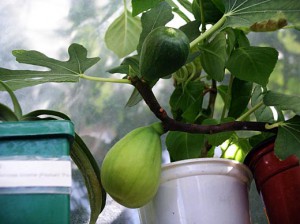
In culture, both two-walled plants of figs are known, forming two shapes of inflorescences: men's capsifics and female figs.
Primary requirements
The plant's care lies in the transshipment as the roots of the earth coma and in the formation of the crown. A beautiful crown is obtained by pieceing and trimming.
Fig is light-see, although it is put up with a half. During active growth, a lot of water requires, as many moisture evaporates wide leaves. Therefore, in the heat
You have to water in the morning and in the evening. Summer holidays Plant spends on the street.
Accustomed to bright light feeling well on the south side.
Cachepo or a tub with the use of white color to protect the roots from overheating. In a word, figs loves to keep the head in the sun, and the legs in the water. "
To the soil the plant is undemandingly. After all, in nature, it can grow between stones and even on the roof of the house. But on the rapid growth and the formation of fruits, a perfection plant takes a lot of mineral substances from the soil. Therefore, its figs during the vegetation once a week feeding the infusion of chicken litter. Several times for the summer on the soil in the pot, the horse manure, which after 10 days I delete.
Cuttings or seeds?
I spread the figs with cuttings - both weird and green. And the cuttings with dense wood are better rooted, rather than green. Young plants are fruitful already in the year of rooting the cuttings, and the fruits are formed on the tops of young shoots.
The cuttings are cut with a length of 5-7 cm (with two-three kidneys) from a royal fruit-bearing plant in spring (before the start of growth) and in summer. The lower slice should be as close as possible to the kidney, the upper 1.5-2 cm above. To accelerate the formation of the influx (Callyus), the lower cut section of the root (the lower part of the cutter is lowered at the beginning into the water, and then into the Pornevian powder or other stimulator).
In addition, it is possible to make several longitudinal scratches to the Cambinal layer on the cortex of the bottom of the cutken, which will allow the nutrients in place of injury to focus. It is here that the apparent roots will appear. Rooted at a temperature of 20-24 degrees, under glass. Depending on the root temperature, the roots appear in 10-25 days.
You can grow plants and from seeds, but they begin to fruit from four-six-year-old age. For young plants, active growth is characteristic. Already in the first year, they reach 0.5 m. And on the second they grow to a meter. And at this age, figs can give up to 50 fruits.
For wintering, the plant fit cool bright rooms with a temperature of +10 to 0 degrees. Although perfection withstands the decrease in temperature and up to -4 degrees. At the same time, leaves fall out in November, and the fruits are saved. In December, the plant begins to growth, and in February the fruits are already tied, which are ripening in June-July. And by the autumn, new ones are tied.
And if the figs were fruit in the summer, and by autumn - barely noticeable new, it is better to store it in a cool room. If the fruits have not started, the plant can be left in the room. With the alternating wintering (one year in a cool room, the other - in the room) in the first year you can expect two harvest, in the second one.


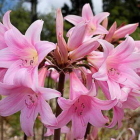
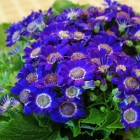

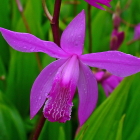


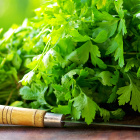
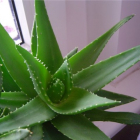

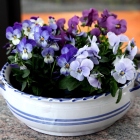
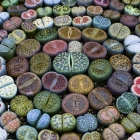
 Start a discussion ...
Start a discussion ...